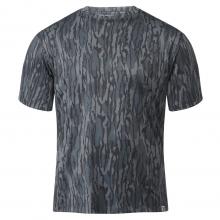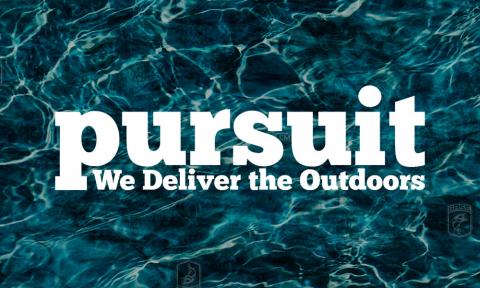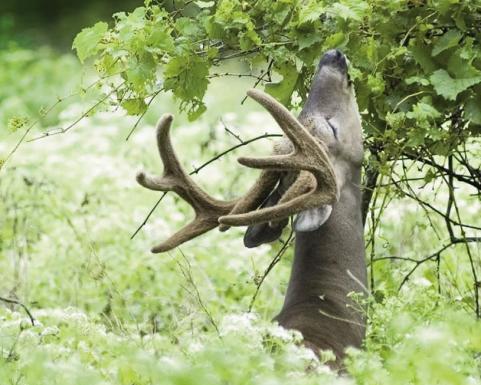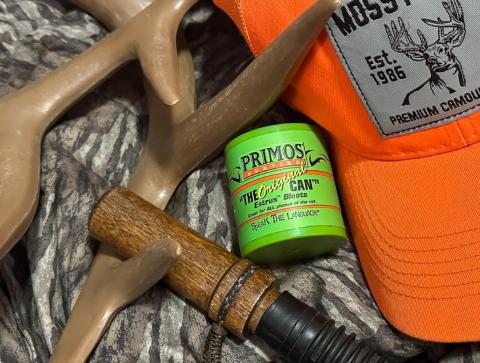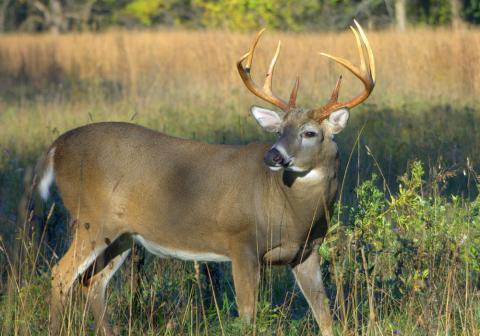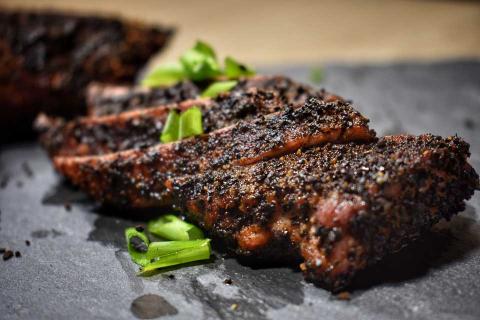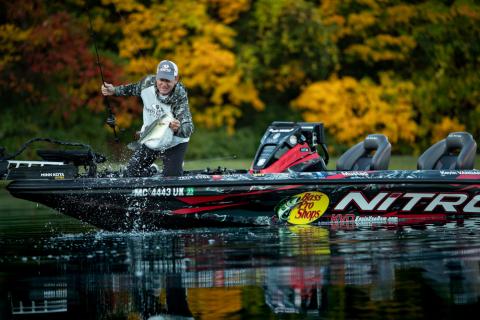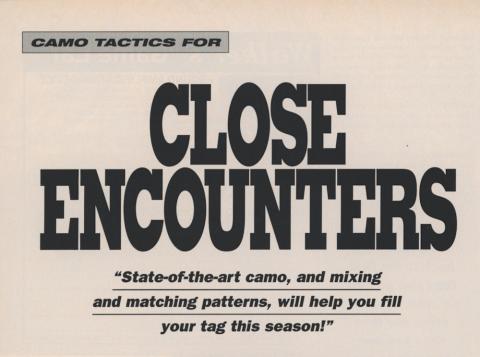Mark Thomas | Originally published in GameKeepers: Farming for Wildlife Magazine. To subscribe, click here.
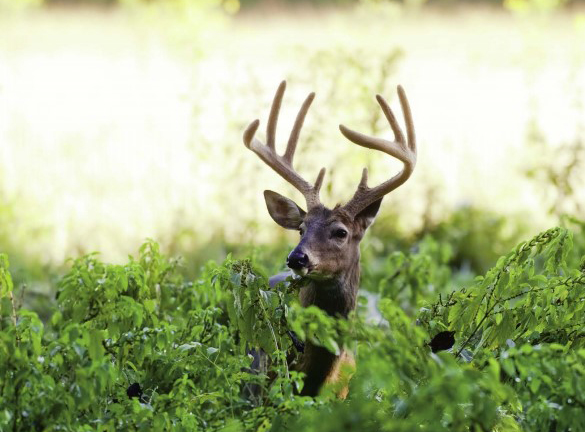
Deer season has been over and turkey season has also come to an end and I hope that you had a safe, enjoyable and successful hunting season. Continue to keep the hunting tradition alive among your family and friends, and don’t forget to introduce our youth to hunting and the outdoors. Here are some activities to keep you busy in the woods and on your property or hunting lease for the rest of the summer and fall.
1. Stalking Lane Installation

with lots of edge, it can provide nutrition during the long winter
months and well into the spring.
Summer is a great time to install some stalking lanes. These lanes can make the time spent afield more enjoyable to hunters who would rather stalk-hunt than stand-hunt. They can also serve as quiet paths when moving into position on a gobbler or to push some deer out of bedding cover to tree stand hunters during the archery season.
One type that I regularly install is called a “blind corner/herringbone stalking lane” and is suitable for young forested/brushy areas usually from three years old up to the first thinning. I install these primarily for archery hunters. They are basically a narrow trail in which all ground vegetation has been removed using a bush-hog or brush-cutter.
I usually use a two percent V:V solution of four-pound glyphosate (Roundup®) and may tank mix with Oust® at three ounces an acre in areas where there are a lot of residual weed seeds or hardwood sprouts present. The Oust® acts as a preemergence product.
The entrance location and direction of travel are based on the prevailing wind direction. Mapping and then flagging the trail is suggested prior to establishment. I like my straight-of-ways to be around 30 yards in length. Corners need to be 45 degrees or greater. I prune the lower branches of trees down each straight-of-way and around each corner. Some of these trails can be over two miles in length and can take several hours to properly hunt.
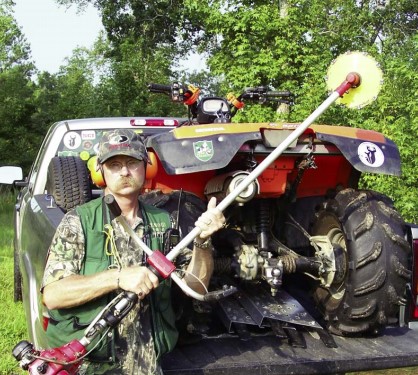
Shindaiwa B-45 pictured, another good saw is the Stihl FS 90
R. Flag in your trial first, with lots of 90 degree bends.
In the middle of each straight-of-way, I like to spray a wide path (around 20 feet wide) with imazapyr (ARSENAL®, HABITAT®) perpendicular to the straight-of-way around 40 yards in length. I will then fertilize with a time-released product once each spring. This ensures that a mixture of succulent herbaceous plants with high nitrogen contents will be available. It is best to hunt the lane once a week at the maximum and on windy or rainy days for best results. You can “hide” the entrance and exit.
2. Wildlife Stand Improvement
Low-quality hardwoods (sweetgum, ash, maple, box elder, etc) have little value for wildlife and can become very invasive, displacing more desirable vegetation, due to their seed dispersal mechanisms. I would encourage you to begin a low-quality hardwood reduction program on your property utilizing the growing season injection method.
Larger trees over two inches” in diameter (DbH – Diameter at breast height) should be injected with a 50:50 solution of imazapyr and water. We are fortunate now to have a generic imazapyr available from Alligare (www.alligarellc.com). One injection site per three inches DbH, with one ml (milliliter) of solution in each injection site, should be sufficient. This will work year-round with the exception of the early spring. The dormant season application is the most effective. I usually also ring my fields in order to eliminate the annual seed dispersal. You can also use this method to “release” hard mast producing trees from the adjacent competition.
3. Native Plant Fertilization
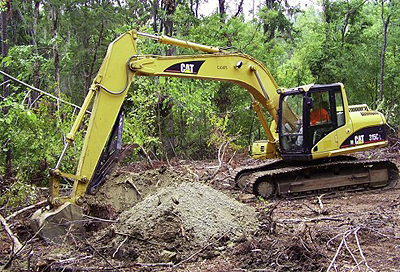
from the root ball as possible. Backfill the hole with the
overburden, then replace the topsoil.
I like to select individual oaks with fairly large and open crowns for fertilization. In some instances, it may be desirable to perform the steps listed above in order to release high-quality trees from the competition. Use 5-10-15 fertilizer and place in the ground around the drip line at one ounce per inch of DbH. Around hunting stands, I like to select three or four white oaks and three or four red oaks for fertilization. Fertilization makes acorn production more consistent with lower tannic acid which makes them more palatable.
Additional wildlife food can be obtained through native plant enhancement with fertilization, especially in the recently burned compartments (early or late winter burns). Apply 200 pounds per acre of 13-13-13 in selected areas. If undesirable vegetation exists on the property, apply imazapyr or glyphosate, burn or disk and then fertilize. Typically, fertilization will bring the protein content up to around 20 to 25 percent, from the six to eight percent average.
4. Non-Native Plant Eradication (Ecosystem Restoration)
Chinese privet is a non-native and highly invasive invader that can ultimately displace preferred native herbaceous plant communities. It forms a dense monoculture and exudes a chemical through its leaves and root exudates that inhibit the germination of native plants. This is a biological occurrence called “allelopathy,” by which an organism produces a biochemical that influences the growth of other plants or organisms.
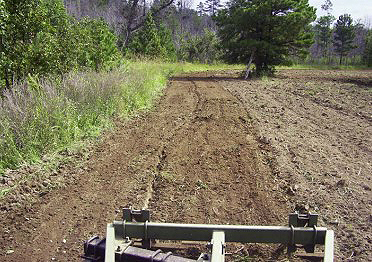
second pass. Note the excellent ecotones established
along the left border of the food plot.
Chinese privet is primarily found all over the Southeast and currently has invaded over 37 million acres, compared to just 7 million acres of kudzu. It should be controlled before it becomes widespread on your property. Privet is utilized by whitetail deer, but due to its invasive nature, it should be controlled and native plant communities should be encouraged.
Use a half percent V:V of imazapyr during the growing or dormant season (December to mid-March in the south)in areas where there are no desirable over-story hardwoods. Spray the leaves to wet, but do not allow dripping. In bottomland hardwood stands, or around desirable trees, use glyphosate at a three percent V:V mixture during the late fall/dormant season which will also work very well if you can obtain full coverage. If you wish to benefit the wildlife it is important to restore ecosystems to their native condition on your property. Remember this; if the first word in the name of your plant is “Chinese,” it’s not native.
5. Prescribed Burning Regime
In order to meet your deer/turkey/small game goals as well as wildlife viewing and aesthetics, I usually recommend a three-year dormant season (pre-turkey nesting period) prescribed burning interval. Compartmentalize the areas into small sections and burn different compartments annually. After the third year, the entire area will have been burned and you should repeat the process. Start with the areas that have the highest fuel load and burn during the dormant season. Each individual compartment should have a fire lane, road or creek around the entirety. Disk your fire lanes in, utilizing the rotational strip disking method. I recommend a primary tillage disk called a BrushMaster® from Wildlife Specialties.
6. Ecotone Establishment
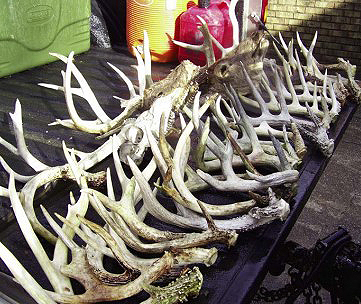
property.
Permanent ecotone structures should be established around all food plot borders and other areas to create “edge transition areas” (called ecotones). Plant communities should be composed of native plants including broomsedge, blackberry, forbs, legumes, sumac, and other herbaceous plants. All non-soft mast producing hardwoods within ecotones should be treated with less than half a percent of % imazapyr or two percent% glyphosate V:V with a directed spray. Disk lanes should be established around each ecotone (between the edge and food plot) in an irregular, wavy manner. Ecotones should be fertilized annually with 200 pounds per acre of 13-6-6 tri-coated fertilizer plus micronutrients. Use Mossy Oak BioLogic’s WhistleBack for establishing ecotones around food plots and other habitat edges when native plants are not present.
Rotational disking can be used to encourage or discourage certain types of plant communities. The timing of the disking can also impact which species will be inhibited and which ones will be regenerated. Disked lanes throughout the habitat can expose the bare mineral soil and allow for early successional plant species to thrive. Disking through grasses can control them, at least temporarily.
Get to Work
Now that you know what to do, it’s time to get to work improving your hunting property or lease. Prioritize the activities that need to be done and work on the biggest problems first. Start off small. It may take you several years in order to accomplish your goals. Post-deer and turkey season is a great time to be in the woods and many other jobs can be completed, as well. Installing shooting lanes, ATV/UTV trails, thinning timber, establishing new food plots, stumping with track hoes, bush-hogging, cutting firewood, etc. can all be conducted during this period. It’s a great time to enjoy the outdoors.
Mark Thomas—Certified Wildlife Biologist/Forester, President—Forestry/Wildlife Integration.







